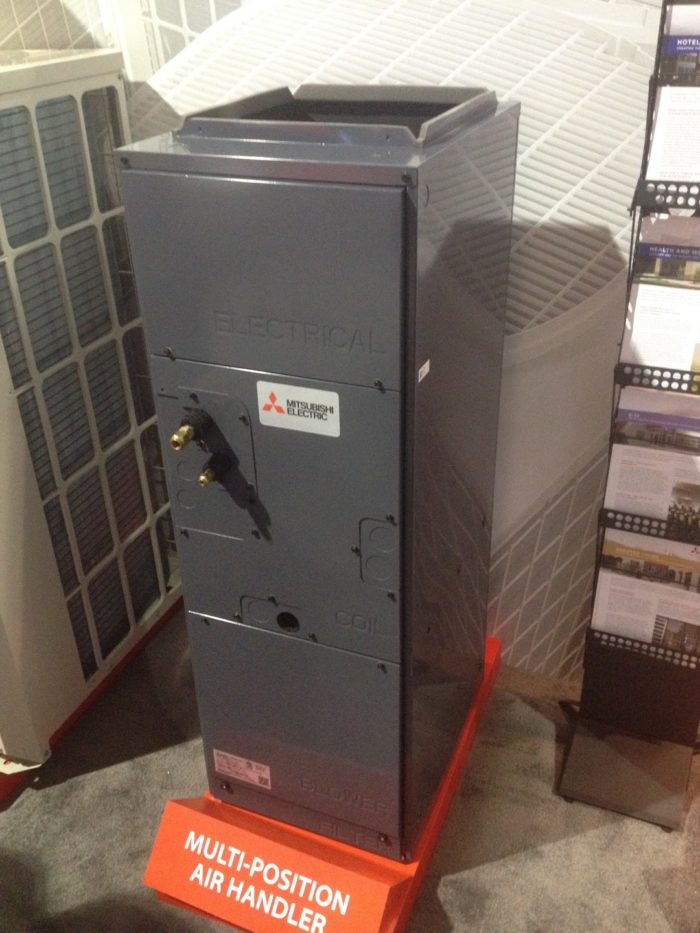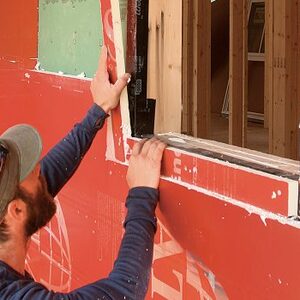
Image Credit: All photos: Carl Seville
Last week I had the opportunity to attend the 2015 convention of the American Institute of Architects (AIA) — a simple matter for me, as it took place in Atlanta. I find that it is often challenging to attend local conferences because we let our daily work take over in a way that we don’t when we travel out of town for events. This time, however, I was able to block out two full days for the event, and was interrupted only occasionally by calls and emails.
As with most industry events, there were educational sessions, keynotes, and a trade show floor. The first two were the typical mixed bag — some good, some not, and way too many sessions to try to hit them all. This event, however has an excellent trade show, rivaled only in my opinion by the annual Greenbuild Expo in size and content.
Before I share some of the interesting products I saw this year, I feel compelled to comment on one of the keynote sessions. I missed the big keynote by Bill Clinton, but managed to make the second one, which featured the Creative Director of Cirque du Soleil, a communications specialist, and a series of award presentations.
One annoying remark can spoil your day
The Topaz Medallion for Excellence in Architectural Education was presented to Peter Eisenman, FAIA. The introduction to this award reminded my why I quit architecture school: the obtuse descriptions of architects and their work puts me to sleep every time. Eisenman was offered an opportunity to make some (thankfully) brief remarks, and he was engaging and interesting.
He did make one comment that rubbed me the wrong way. He remarked that while he had heroes as a young architect, there weren’t many around any more. References included Frank Lloyd Wright, Le Corbusier, and Luis Kahn. He then said that “sustainability is not a heroic condition,” taking the not-unusual-for-an-architect’s position that sustainability is just an afterthought to the noble practice of architecture.
In contrast to other award winners, who were not given an opportunity to speak, Eisenman’s comment seemed to me to be a bit tone-deaf. In contrast, there was an award presented to the Auburn University Rural Studio — an incredible school doing meaningful work bringing high quality architecture and construction to an impoverished area.
The Latrobe Prize was presented to Woodbury University’s Arid Lands Institute for tools they created to help professionals with stormwater capture and reuse.
The snarky remark about sustainability from a high-profile architect was quite a contrast to the Arid Land Institute award. The “starchitect” Eisenman got to tell us how sustainability doesn’t matter, and the people who are working to keep us from dying of thirst weren’t given a chance to say a word. Seems like someone got their priorities wrong on this one.
Inspiring remarks
A video about Chris Downey, an architect who continues to practice after losing his sight, was inspiring.
Andrew Freer, the director of the Rural Studio, was given an opportunity to speak about the studio’s work. Freer’s remarks inspired me to schedule a visit there soon.
Enough whining about architects
Looking at the products on display, I ran across several worthy of mention. Mitsubishi has just come out with a traditional air handler that works with the variable refrigerant flow (VRF) technology that the company uses in its minisplits. This heat pump now allows for this technology to be ducted throughout a house with products from a single vendor.
LED lighting continues to evolve, and one lamp design (offered by several manufacturers, including Cooper Lighting) involves illuminating the edges of an acrylic lens with a ring or strip of diodes. This provides an even light that eliminates glare, as all the light is indirect. Although primarily for commercial fixtures, I would expect to see it expand quickly into the residential market.
The departure from the market of one of my favorite products, Perennial Wood, has left me looking for a suitable substitute, and I may have found it. There are several manufacturers of acetylated and thermally modified wood that practically eliminate warping, rot, and termite infestation. However, most of these products are sold only as raw stock for custom milling. Wahoo Decks is now offering thermally treated deck boards and tongue-and-groove porch flooring.
Expensive solution to bad design?
Sage Glass produces electronically tinted glass that can transform from clear to almost opaque by a switch or through light sensors, reducing solar gain when necessary. This product has been around for a while and is used in some skylights, but it is primarily specified for glass commercial buildings where over-glazing and solar heat gain are problems. After playing around with their tinting for a while, I came to the conclusion that while it is a nice, cool technology, it really is an expensive solution to bad designs. If architects would just not put so much glass on their buildings, they wouldn’t need products like this to fix the problems they create.
Thermal break products were abundant on the show floor. Oldcastle displayed a CMU system with integrated EPS foam exterior insulation, including thermal break strips for the mortar joints. Designed for application of a finish masonry veneer over the foam, this looks like an interesting option for commercial, and possibly residential buildings, providing a continuous thermal break while leaving the masonry available for thermal mass on the interior.
A different way to accomplish the same result was on display by ITW. The company has a system that uses a cordless nail gun to attach foam and mineral wool boards to CMU or framed walls using large-head plastic anchors. Available in lengths to accommodate most rigid board thicknesses, the product looks promising. However, I would like to know how the exterior finish is applied with this design.
Finally, Armadillo NV provides noise and thermal break connection devices. My favorite is the thermal break for cantilevered slabs that includes both fiberglass rebar and an insulation block to really separate the exterior slab from the interior floor.
While some starchitects may trash talk sustainability, manufacturers understand that high-performance building is here and continuing to grow. I guess we will have to rely on them to help lead the charge.
ITWCCNAIF_Brochure_Finalpage1.compressed.compressed.pdf
Weekly Newsletter
Get building science and energy efficiency advice, plus special offers, in your inbox.















5 Comments
Sageglass
interesting, I thought Sage Glass was best in show when I saw it at greenbuild a few years ago, I thought it might actually be a terrific way of really making passive solar heating controllable. But you are right about having too much of a very expensive good thing.
Starchitects
"If you were a son of mine, I wouldn't want you to be an architect, because it's a tough way to be in the world."
Peter Eisenman
Mitsubishi air handler
Carl,
The Mitsubishi air handler IS a cool development...I just wish it were compatible with the M-series single-split outdoor units.
late to the game
Wow, Mitsu took that long to come up with that type of air handler??
I thought its market arrival was "imminent" back when my Daikin ducted
system went in, early 2012.
Since the Daikin unit was part of the "Skyair" family more geared toward
light commercial installation than residential, it doesn't surprise me
that Mitsu offers this with the "city multi" line, which I guess is their
rough equivalent but less compatible with the small outdoor units.
_H*
Mitsubishi Air Handler
John - I didn't get into any in depth discussions with the rep at the conference, but he did tell me that it must be connected to an outdoor unit with at least one other inside fan coil - either another air handler or a ductless head. My biggest frustration with the mini splits is that they multi head units are so much less efficient than the one to one systems. Their wall mounted now has a SEER rating of 30, which drops quickly once you go to the multi head system. I don't know the physics well enough (or at all) to know why, but it seems like they could improve on this.
Log in or create an account to post a comment.
Sign up Log in